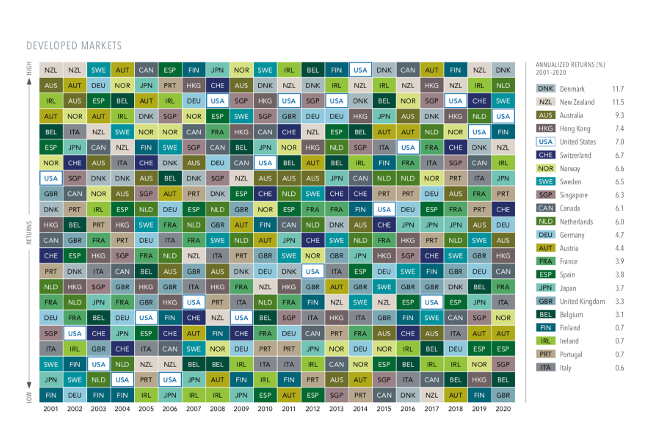The new 529-to-Roth IRA transfer rule may help parents maximize the next generation’s educational savings and avoid unwanted taxes.
For years, the 529 plan has stood out as a favored method to set aside funds for college. Yet many parents have approached these plans with caution, wary of the financial penalties they might face if the beneficiary either chose not to pursue higher education or didn’t utilize the entire balance.
The introduction of a potentially game-changing rule intends to make the prospect of contributing to a 529 plan more appealing. Beginning next year, beneficiaries can transfer unused 529 funds to a Roth IRA, allowing parents to sidestep unwanted tax penalties and redirect their contributions toward the beneficiary’s retirement savings.
Ultimately, the new 529-to-Roth IRA transfer rule may make it easier to fund the next generation’s education by eliminating some of the previous risks involved with overfunding a 529 plan. However, it’s important to understand how this rule works, as well as its limitations, to maximize the potential benefits.
PREVIOUS RISKS OF OVERFUNDING A 529 PLAN
A 529 plan is an investment account that offers certain tax advantages if the funds go toward qualifying education expenses. Currently, individuals can contribute up to the annual exclusion amount ($17,000 as of 2023) each year without incurring the gift tax.
The IRS also allows individuals to “super-fund” a 529 plan by contributing up to five years of gifts at once, per beneficiary. While this benefit can be a powerful strategy for high earners to reduce their taxable income, it can also be fraught with risk under the existing regulations.
For instance, if a 529 plan beneficiary decides not to go to college or doesn’t use the entirety of their funds, the plan’s contributors may face significant tax penalties if the funds are ultimately used for non-educational purposes. This generally entails paying federal income taxes and a 10% penalty on any investment gains. Some states may also impose taxes on non-qualified withdrawals.
WHY THE 529-TO-ROTH IRA TRANSFER RULE IS A GAME-CHANGER
The new 529-to-Roth IRA transfer rule, which President Biden signed into law at the end of 2022 as part of a $1.7 trillion spending bill, intends to ease many of the concerns parents previously had about overfunding a 529 plan.
Currently, few options exist for allocating unused 529 plan funds. These include naming a new beneficiary to replace the old one, withdrawing up to $10,000 to pay down eligible student loans, or withdrawing the remaining funds for non-educational purposes and paying the associated taxes.
This has deterred many people from contributing the maximum allowable amount to a 529 plan. However, the new rule provides a safety net by allowing account owners to roll over unused funds to a Roth IRA.
As a result, parents and other benefactors can invest more confidently in 529 plans, knowing they can avoid unintended taxation if the beneficiary’s plans change. Transferring the balance to a Roth IRA not only allows the funds to continue growing tax-free but also gives the beneficiary a head-start on their retirement savings.
LIMITATIONS OF THE 529-TO-ROTH IRA TRANSFER RULE
While the new rule may be a boon for many families, it comes with specific limitations:
- Lifetime Maximum: A beneficiary can transfer a lifetime maximum of $35,000 from a 529 plan to a Roth IRA. Any funds that exceed this limit may be subject to taxes and other penalties.
- Transfer Restrictions: Funds can only be transferred to the 529 plan beneficiary’s Roth IRA. In other words, parents can’t convert unused contributions back to their own retirement accounts.
- Account Age: The 529 account must have been in existence for at least 15 years before any transfers can be made.
- Five-Year Rule: Beneficiaries can’t transfer any contributions or earnings on contributions from the last five years to a Roth IRA, potentially delaying the conversion process.
- Annual Contribution Limits: Transfers are subject to the annual Roth IRA contribution limits ($6,500 as of 2023), even if the 529 plan has more funds. Therefore, it would currently take roughly six years to convert $35,000 from a 529 plan to a Roth IRA. However, there’s no upper-income constraint for transferring 529 plan funds to a Roth account.
Because of the new rule’s restrictions, transferring 529 plan funds to a Roth IRA may be a long-term play for many families. Nevertheless, the rule change may motivate more parents to contribute to 529 plans on behalf of their children rather than opt for less tax-efficient savings options.
NAVIGATING THE NEW RULE’S LIMITATIONS
Indeed, the new 529-to-Roth IRA transfer rule has a variety of restrictions that may not be ideal for every family. Thus, the following considerations may be helpful when it comes to navigating these limitations and maximizing the rule’s potential benefits:
- Capital Appreciation: Since transfers are subject to annual Roth IRA contribution limits, a 529 plan that has less than $35,000 in it when the conversion process begins may exceed this limit as time passes due to capital appreciation. Therefore, parents and beneficiaries may want to consider the potential impact of their investment selections and plan accordingly.
- Account Minimums: In most cases, the amount required to open a 529 plan is minimal. To sidestep the 15-year limitation, parents with younger children may want to consider opening a 529 plan on their behalf as soon as possible, even if they only have a small amount of money to contribute.
- Five-Year Rule: Once a beneficiary indicates that they no longer intend to use their 529 plan funds for educational purposes, parents may be wise to suspend future contributions to the account to avoid delays due to the five-year rule.
While the new 529-to-Roth IRA transfer rule is a significant step forward, its nuances and limitations may add a layer of complexity to the college savings process. To avoid potentially costly mistakes and make the most of your children’s educational and retirement savings, consider working with an experienced financial advisor like Sloan Advisory Group, who can guide you skillfully through these opportunities and challenges.
To develop a comprehensive financial plan that aligns with your values and goals, please contact us. We’d love to hear from you.







